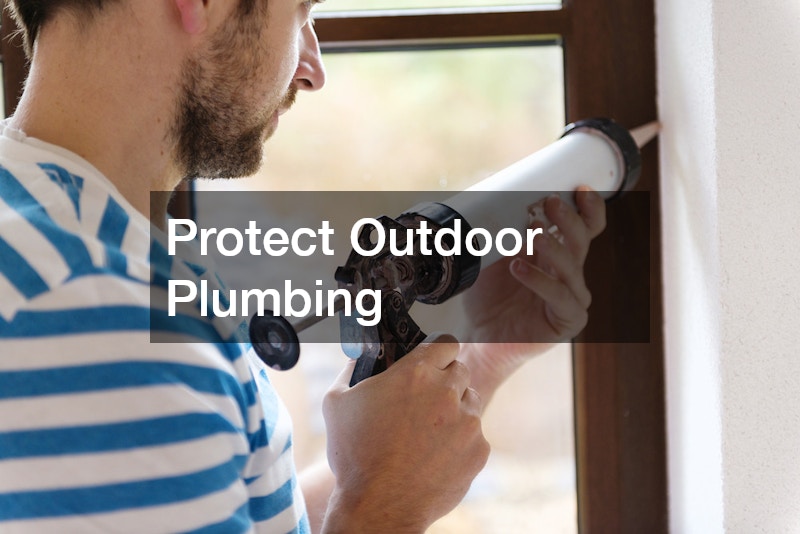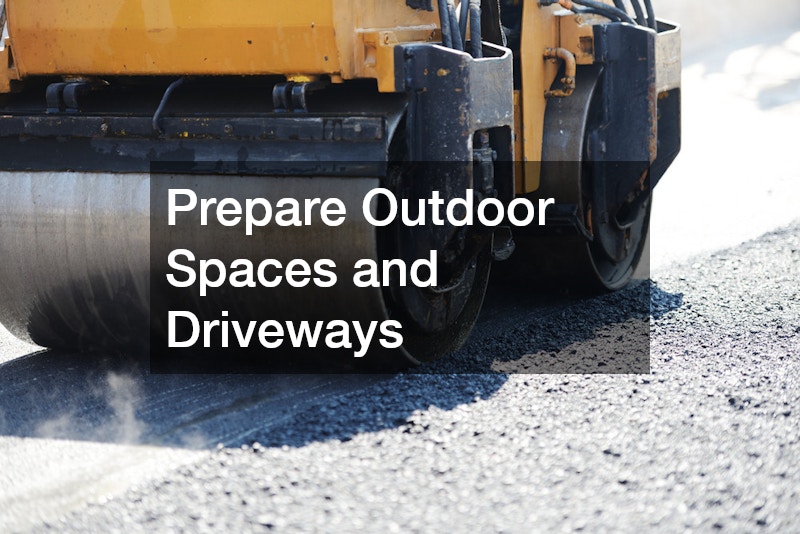As the crisp air settles in and leaves begin to change color, fall signals more than just cozy sweaters and pumpkin spice — it’s also nature’s reminder that winter is on its way. For homeowners, this is the ideal time to prepare your home’s exterior and interior before temperatures drop and snow arrives. A few smart maintenance steps now can save you from costly repairs and chilly surprises later.
Fall maintenance isn’t just about cleaning up the yard or sweeping leaves from the porch. It’s about protecting your investment and creating a warm, efficient, and safe environment for the colder months ahead. Let’s explore how to get your home fully winter-ready — from the roof over your head to the foundation beneath your feet.

Inspect and Maintain Your Roof
Check for Damage and Wear
Your roof is the first line of defense against snow, rain, and freezing temperatures. Before winter sets in, give it a little attention. Start by looking for missing shingles, curling edges, or any sagging areas that might indicate trapped moisture. Even if everything looks fine from the ground, subtle problems often go unnoticed.
Hiring professionals who offer residential roofing services can make this step easier and safer. These experts know what to look for and can identify minor damage before it turns into a leak during the next big storm. They can also recommend repairs that extend your roof’s life while improving its insulation — a big help in keeping energy costs low during winter.
Clean Gutters and Downspouts
Leaves, twigs, and debris tend to pile up quickly in gutters during fall. When water can’t flow freely, it freezes in winter, causing ice dams that damage both the roof and walls. Prevent this by cleaning your gutters thoroughly or hiring gutter cleaning services for a professional touch.
It’s also worth checking that your downspouts direct water away from your home’s foundation. You can use downspout extensions or splash blocks to keep runoff from pooling near the base of your home. When the temperature drops, that moisture can freeze and cause cracks in concrete or basement leaks.
Schedule a Professional Inspection
Even with a careful visual check, nothing replaces a professional inspection. Many homeowners schedule annual maintenance visits with trusted roofing contractors who can perform a comprehensive review. They’ll look at your flashing, vents, seals, and any signs of water intrusion. It’s a small step that can save you from huge repair bills in the middle of winter.
Prepare Your Siding and Exterior Walls
Wash and Inspect Siding
The exterior walls of your home take a beating year-round, from summer sun to winter frost. Giving them a deep clean in the fall helps remove dirt, mildew, and pollen that can trap moisture and cause long-term wear.
If you notice cracks, warped panels, or peeling paint, take care of those issues now. They may seem minor, but cold temperatures can make materials brittle and worsen damage. If your home has vinyl siding, it’s a good idea to consult with a vinyl fence company or exterior specialist familiar with maintaining weather-resistant materials.
Seal Gaps and Cracks
Drafts and leaks around doors, windows, and siding edges can rob your home of heat and raise energy bills. Walk around your home on a breezy day and feel for air leaks. Use caulk or weatherstripping to seal gaps and cracks, paying special attention to corners and joints.
This is also a great time to inspect outdoor outlets, hose bibs, and vent openings. If any gaps are too large, consider using spray foam insulation for extra protection.

Protect Outdoor Plumbing
Drain and Disconnect Hoses
Nothing ruins a cozy winter day like discovering a burst pipe. Before freezing weather arrives, disconnect all garden hoses and drain outdoor faucets completely. Leaving water trapped in pipes can lead to expansion and cracking when it freezes.
If your property has an irrigation system, schedule sprinkler repairs or winterization services. Professionals can blow out remaining water from the lines, ensuring they don’t freeze and burst underground. This quick step helps you avoid expensive plumbing repairs in spring.
Insulate Exposed Pipes
In unheated spaces such as garages, crawl spaces, and basements, wrap exposed pipes with foam insulation sleeves. For extra protection, you can use electric heat tape. It’s a small investment that prevents a big headache later.
Prepare Your Lawn, Garden, and Trees
Clean Up Debris and Fallen Leaves
A thick layer of fallen leaves might look picturesque, but it can smother your lawn and harbor pests. Rake regularly and compost healthy leaves for garden mulch. If your property has large trees, trimming them before winter helps prevent broken branches during snow or ice storms.
You can also contact local tree trimmers to safely remove overgrown or damaged branches. Not only does this protect your home and power lines, but it also promotes healthier growth in the spring.
Winterize Landscaping and Equipment
Before frost hits, give your lawn and garden the care they need to rest and recover through the cold months. Cut back perennials, remove dead plants, and spread a layer of mulch to protect roots.
If you have outdoor features such as flowerbeds, retaining walls, or decorative pathways, check for loose patio stones or uneven areas. Leveling them now prevents accidents when snow covers your yard.
Proper landscaping maintenance isn’t just about appearance — it also ensures good drainage and prevents soil erosion during melting snow and spring rain.

Check Windows, Doors, and Insulation
Test for Drafts
Even the smallest draft can make your heating system work harder all winter. Test your windows and doors by holding a lit candle or incense stick near the edges — if the smoke flickers, air is getting through.
You can apply weatherstripping or foam tape to improve insulation quickly. For older windows, adding plastic insulation film can create an extra barrier against cold air.
Replace or Repair Damaged Seals
Damaged seals or worn-out caulking around windows and doors should be replaced before the first freeze. This not only keeps your home warm but also reduces condensation that can lead to mold or mildew.
While sealing, inspect locks and hinges too. A little lubrication prevents them from sticking during freezing weather.
Service Your Heating System
Schedule a Furnace Inspection
Your heating system will soon be working overtime, so give it some attention before winter begins. Schedule a professional inspection to check for worn parts, carbon monoxide leaks, or dirty filters.
Replacing filters improves air quality and ensures the system runs efficiently. Regular maintenance can extend the lifespan of your furnace and help you avoid sudden breakdowns on cold nights.
Check Smoke and Carbon Monoxide Detectors
Heating systems, fireplaces, and space heaters increase the risk of carbon monoxide buildup. Test your smoke and CO detectors now, replace batteries, and install new devices if needed.
Keep spare batteries handy and make it a habit to test all detectors monthly during winter. It’s a simple habit that can save lives.

Prepare Outdoor Spaces and Driveways
Repair Cracks in Walkways or Driveways
As temperatures drop, small cracks in driveways or sidewalks can worsen. Water seeps in, freezes, and expands — leading to larger damage by spring.
Seal those cracks early or contact professionals who provide asphalt paving services to handle larger repairs. A smooth, even surface also makes snow removal safer and easier when the flakes start to fall.
Store or Cover Outdoor Furniture and Grills
Outdoor furniture, cushions, and grills aren’t built to withstand months of freezing weather. Clean and dry them thoroughly before storing in a shed or garage. If storage space is limited, invest in durable, waterproof covers to keep everything in good shape.
For wooden decks or furniture, consider applying a weatherproof sealant to prevent cracking and warping.
Inspect Your Chimney and Fireplace
Schedule a Chimney Cleaning
If you enjoy cozy fires during winter, make sure your chimney is clean and safe. Over time, creosote builds up inside the flue, which can cause dangerous chimney fires.
Hire a certified chimney sweep to remove debris, inspect the liner, and check for cracks. You’ll have peace of mind knowing your fireplace is ready for the season.
Prepare Firewood Storage
Keep firewood dry and elevated off the ground. Store it a few feet away from the house to avoid attracting pests.
It’s also smart to keep kindling and starter logs nearby in a waterproof container for convenience when temperatures drop.
Double-Check Home Safety and Emergency Preparedness
Review Your Home Safety Plan
Winter storms can sometimes cause power outages, so it’s wise to prepare ahead. Stock up on flashlights, candles, blankets, and non-perishable food. Make sure you have backup heating sources, such as a small generator or propane heater (and know how to use them safely).
Check that outdoor lighting is functional for dark evenings. If any bulbs are dim or flickering, replace them with energy-efficient LEDs that perform well in cold weather.
Inspect Detectors and Extinguishers
Aside from testing smoke alarms, make sure you have a working fire extinguisher on each floor of your home. Review safety instructions with your family and keep emergency contacts handy.
If you live in a region prone to heavy snow, consider labeling your home’s main shutoff valves and breaker switches so you can access them quickly in an emergency.
Secure Fences and Outdoor Structures
Wind, ice, and heavy snow can strain fences, pergolas, and gates. Walk around your property and check for loose boards, rusted hardware, or leaning posts.
If you find damage or instability, contact local fence companies for quick repairs. Professionals can reinforce weak sections and even apply protective coatings to prevent rust or wood rot.
This is also a great time to inspect your deck railings and porch stairs. Tighten screws, replace broken boards, and give surfaces a fresh coat of sealant if needed.
If your property has privacy fencing, make sure the panels are secure and latches close properly. This prevents sudden collapses under the weight of snow or high winds.
Check Your Yard and Perimeter
Trim Overhanging Branches
Falling branches are one of the most common causes of winter damage. Heavy snow or ice can make limbs snap without warning, potentially damaging your home, vehicles, or power lines.
Hiring professionals for trimming ensures safety and precision. If your property has decorative hedges or fruit trees, pruning now helps them grow stronger and healthier come spring.
Regular care from local tree trimmers keeps your landscape balanced and your home safe.
Strengthen Outdoor Fencing and Fixtures
Beyond fences, don’t forget about sheds, playsets, and gazebos. Check that their foundations are level and all hardware is secure. Wind and ice can quickly turn small issues into major repairs.
Adding waterproof covers or tarps helps protect outdoor equipment like lawnmowers and bicycles from rust and moisture.
Caring for Hardscape and Outdoor Decor
Your home’s curb appeal doesn’t have to disappear with the first frost. Taking time to protect patios, paths, and decorative features keeps your property looking inviting year-round.
Inspect stone walkways for shifting or cracked pieces. Repairing loose patio stones now reduces tripping hazards and prevents further damage from frost heaving.
If your outdoor decor includes planters or sculptures, clean and move them indoors or under shelter to avoid cracking in freezing temperatures.
You can also use weatherproof mats near entrances to keep ice and salt from being tracked into the house — a simple way to protect your flooring.
Boost Energy Efficiency Indoors
While much of fall maintenance focuses on outdoor care, interior energy savings are just as important. Check that your home’s insulation is intact, especially in the attic, basement, and around windows.
If you notice uneven temperatures between rooms, it might be time to adjust airflow or have your HVAC system evaluated. Closing vents in unused rooms helps direct heat where it’s needed most.
Adding thick curtains or thermal drapes can also help retain warmth. They’re easy to install and can make a noticeable difference in comfort and utility costs.
Pay Attention to Your Driveway and Entryways
When snow begins to fall, the areas you walk and drive on can become slippery hazards. Before that happens, apply sealant to small cracks and ensure proper drainage.
If your driveway or walkway needs more than a quick touch-up, consider professional asphalt paving services to restore its smooth surface. Not only does this improve safety, but it also boosts curb appeal during the gray winter months.
Keep ice melt or sand on hand, and store shovels or snow blowers where they’re easy to reach.
Organize Garages and Storage Areas
Before winter gear, snow shovels, and boots take over your space, do a quick reorganization. Group tools, cords, and outdoor equipment by season.
Sweep out dirt and debris, then check for drafts or gaps around garage doors. Adding insulation strips helps keep the space warmer and reduces cold air from entering your home.
If your garage has unfinished walls, consider adding shelving or storage hooks to maximize floor space — especially useful when parking during snowy months.
The Final Touches: Cozy and Safe Living
By the time your checklist is complete, you’ll have more than just a home ready for winter — you’ll have peace of mind. The comfort of knowing your pipes won’t freeze, your roof won’t leak, and your yard won’t turn into a hazard makes the work worthwhile.
Consider scheduling annual maintenance reminders in your phone or planner. Once fall rolls around each year, you’ll be ready to take small, consistent steps that keep your property strong, safe, and beautiful season after season.
And if you decide to add curb appeal before the snow arrives, working with a landscaping professional can bring new life to your property. A well-groomed yard paired with sturdy fencing and clear walkways makes every home feel welcoming — even when the weather outside is less than inviting.
Preparing your home for winter doesn’t have to be stressful. By breaking it down into manageable tasks — from inspecting your roof and siding to cleaning gutters, sealing cracks, and caring for your yard — you can protect your home from the harsh elements and save money on repairs.
Every hour you spend on fall maintenance pays off through fewer headaches, lower bills, and a more comfortable home all season long.
So grab your gloves, make some cocoa, and tackle your checklist with confidence. When the snow starts falling, you’ll be grateful you took the time to make your home warm, secure, and winter-ready.
